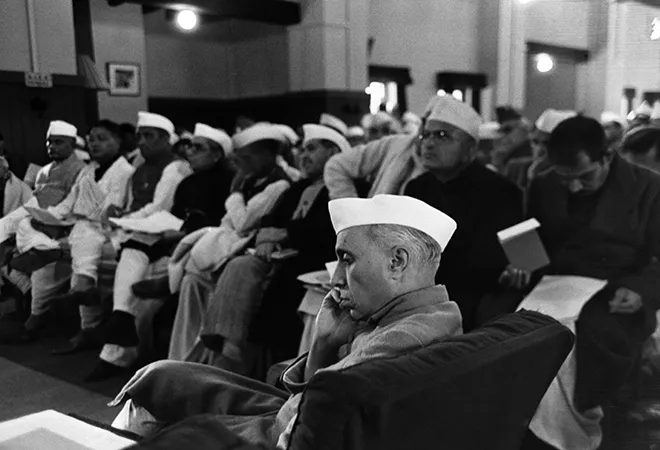
The following is a chapter from the book 70 Policies that Shaped India: 1947 to 2017, Independence to $2.5 Trillion.
Find the book here.
One of the last laws to be passed by Parliament four months before Independence, the Capital Issues Control Act <1>, enacted on 18 April 1947, showed who would be in charge of capital in a socialist India: the government, through the Controller of Capital Issues (CCI). Under this Act, the government decided which company could raise how much capital. No company shall, “except with the consent of the Central Government, make an issue of capital,” the Act stated <2>. The control over the amount as well as its pricing converted the office of CCI into a zero-risk, high return lottery-ticket dispenser, as the prices of the shares offered to the public through capital markets were tremendously undervalued, giving a huge margin to investors and speculators on listing. Since the asymmetric information was in favour of companies, the government possibly considered its role as one that created a balance in favour of investors. On 21 December 1957, the law was amended and made more stringent with the Capital Issues <3> (Control) Amendment Act, by giving CCI the power to revoke the consent or recognition accorded under any of the provisions <4> or, where such consent or recognition is qualified with any conditions, change all or any of those conditions. As instruments to translate ideas and entrepreneurship into wealth, the role of capital markets, particularly equity markets, is key. Given that mutual funds did not exist then, choosing, applying, taking the risk and getting the returns was left to individual households. By ensuring that the prices of shares were kept low, the government ensured gains to small investors. But this meant that enterprises were not able to get the right value. Following the gradual opening up of the economy, the CCI was repealed on 5 August 1992 <5> and gave way to Securities and Exchange Board of India <6> (SEBI, more below <7>) on 12 April 1992. Through a series of regulations, SEBI has steered the capital markets and enabled them to arrive at sensible pricing, something that neither the government nor the entrepreneurs could achieve on their own. Predictably, this transition was opposed by the status quo, which argued that the capital market, particularly the primary market, was getting murkier because SEBI permitted free pricing of initial public offerings, thereby inviting the private sector to exploit the gullible public. As we know in hindsight, and on the contrary, this freedom has allowed the capital markets to soar and catalyse the real economy in ways that were impossible to imagine before 1992.
<1> The Capital Issues Control Act, 1947, Securities and Exchange Board of India, 18 April 1947, accessed 28 December 2017.
<2> Ibid., Section 3(1).
<3> The Capital Issues (Control) Amendment Act, 1957, The Central Acts of India 1957, Government of India, 1957 (Digitising sponsor: Ministry of Law and Justice), 21 December 1957, 338–341, accessed 28 December 2017.
<4> Ibid., Section 3 of the Principal Act.
<5> The Capital Issues (Control) Repeat Act, 1992, Parliament of India, 5 August 1992.
<6> Website of Securities and Exchange Board of India, accessed 28 December 2017.
<7> Chapter 40: Securities and Exchange Board of India
The views expressed above belong to the author(s). ORF research and analyses now available on Telegram! Click here to access our curated content — blogs, longforms and interviews.




 PREV
PREV



